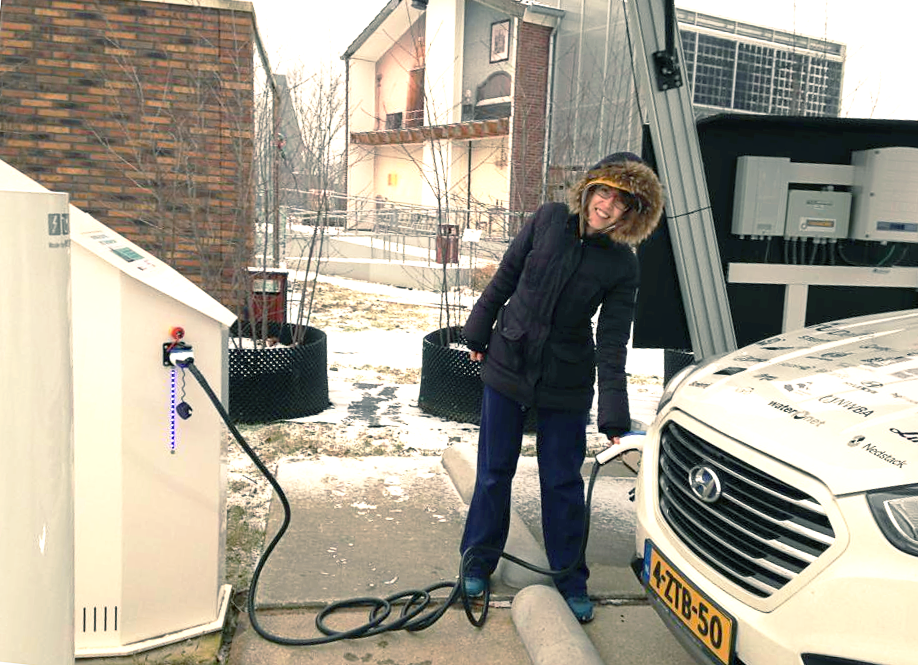
Francesca Abbruzzese, TU Delft visiting students, delivering power to the grid produced by the fuel cell electric car
The experiment, conducted at the Delft University of Technology (TU Delft), in the Netherlands, aimed at testing the integration of fuel cell electric vehicles working in vehicle-to-grid (V2G) mode with a prosumer type residential house. For two weeks two visiting students, Francesca Abbruzzese and Anna Rojan, were encouraged to carry out their daily routine while living in the Prêt-à-Loger (PaL) house at the Green Village of TU Delft. The house is an all-electric building equipped with solar panels on the rooftops and heat pumps. Furthermore, they had at their disposal a Hyundai ix35 FCEV, which could be connected to a V2Gdischarge unit (as shown in the picture above) that allowed to deliver power back to the grid complementing the solar panels production. Solar energy can be used during the day to cover the residential energy needs, while at night, parked fuel cell cars can be used as power generators. The car was used both for mobility and power generation thus the hydrogen stored on board (approximately 5 kg) had to be enough to fulfil both purposes. Two different modes of operation were tested in total. Around 3 kg of hydrogen were consumed in V2G mode each day (see Table below).

During the first week, the car was connected in V2G at lower output, allowing it to operate for longer time with the hydrogen available in the on-board tank. On the second week, the car was connected in V2G mode at maximum power output for the V2G connection, for shorter time. The results will contribute to gain new insight to fulfil the nearly zero-energy building target set out by the European directive 2010/31/EU.
For more information related to the article, please contact:
Jorien Van Loon
Project Manager at University of Twente


